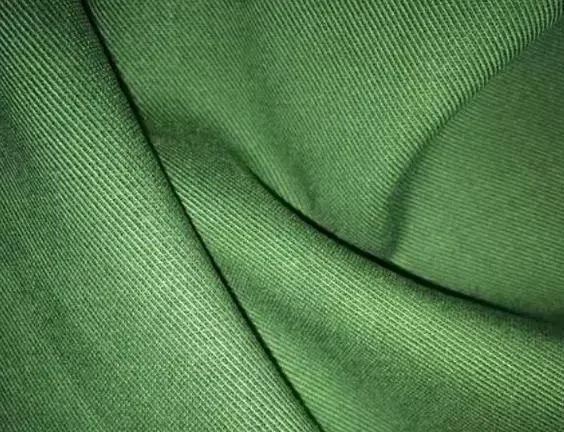What is textile fabric? Textile Fabric Definition: In the textile industry, a fabric or textile is a soft material. Fine, pliable materials like yarns, fibers, and filaments make it. Specific structural relationships (cross, knot-tying, and joining) create it. It is widely used in apparel, medical care, and industry.
1. Three types of structural relationships of fabrics
The structural relationship of fabrics refers to their organization. It is the spatial relationship between raw materials in fabrics. These are fibres, yarns, and filaments. It includes three types: cross, knotting, and connection relationships. These three fabric structures are the key to knowing them. These three structures form the basis for all fabric specifications, properties, and functions.
| Structural relationships | Definition | Representative fabrics |
| Intersectionality | The relationship between two groups of yarns that meet in a straight line and then contact each other alternately up and down, forming a stable cosine-cosine curve-like superposition. | Woven fabrics: woven on a loom by a set of perpendicular warp yarns and a set of weft yarns according to a certain pattern. |
| Intertwining relationships | A group of yarns move in a curved line with left and right curvature, and the yarns close to each other are in a stable relationship by encircling and threading each other. | Knitted Fabrics: Knitted fabrics are formed by the regular movement of yarns through knitting to form loops, and the loops and loops are interlocked with each other to form the fabrics. |
| Connection | The yarns close to each other or in contact with each other rely on bonding and other external forces to form a stable relationship. | Nonwoven Fabrics: Textile staple fibres or filaments are oriented or randomly arranged to form a fibre network structure, which is then reinforced by mechanical, thermal bonding or chemical methods. |
2. Distinction of fabric categories
2.1 Distinction of organisation structure
Woven fabrics, also called woven fabrics, are of three types: plain, twill, and satin. Woven fabrics are stable, with no elasticity, except for those with elastic fiber. They have a flat surface and are solid and durable. Mainly chiffon, oxford cloth, denim, twill, flannel, flower satin and so on.
Loops of the same yarn make knitted fabrics. They form a weft knitted fabric, with a parallel arrangement of the warp yarns. The loops are the basic unit of knitted fabrics. Knitted fabrics are elastic, soft, and comfortable. They’re breathable and disperse heat easily. Mainly sweat cloth, velvet, bird’s eye cloth, mesh cloth and so on.
Nonwoven fabrics, also known as needle-punched cotton and nonwovens. Nonwoven fabrics have many qualities. They are moisture-proof, breathable, flexible, lightweight, flame retardant, non-toxic, and odourless. They’re also inexpensive and recyclable. You can use them for heat insulation, masks, garments, medical treatments, and fillers.
2.2 The distinction between the front and back of the fabric
Appearance
Identification of positive and negative features
Pattern
The pattern and colour of the front side of most fabrics are clearer and more beautiful than the back side.
Edge
The clean and neat side is the front side
Striped fabric
Fabrics with the appearance of stripes have a clear and beautiful pattern on the front side.
Convex or embossed fabrics
The front is tight and delicate, with a striped, convex pattern. The reverse is rougher, with longer, floating threads.
Pile fabrics
One-sided pile fabric, the pile side is the front side of the fabric.
Double-sided pile fabrics, pile clean, neat side for the front.
Double, multi-layer and multi-fabrics
Generally the front side has a greater density, or the front side of the material is better.
Towelling fabrics
The side with greater density of terry is the front side.
Leno fabric
Clear grain, grain warp prominent side for the front.
2.3 Warp, weft distinction
Warp, weft are the two yarns that make fabric. You must know them to characterize fabrics.
(1) Observe the fabric’s edge. The direction parallel to it is the warp yarn. The direction perpendicular to it is the weft yarn.
(2) Containing paste is the warp yarn, not containing paste is the weft yarn.
(3) The warp yarn is the high-density direction of the fabric. The low-density direction is the weft yarn.
(4) The direction of reed mark is warp for fabrics with obvious reed marks.
(5)If a fabric’s yarns are of two types, they are usually: the stranded yarn for the warp and the single for the weft.
(6)If the fabric’s single yarn twists in both directions, it is generally Z twist for the warp and S twist for the weft.
(7)If the yarns in the fabric are twisted in different directions, the larger twist is usually in the warp direction. The smaller twist is in the weft direction.
(8)If the warp and weft yarns’ number, twist, and twist differences are not large, then the yarn dry uniformly. The warp yarn has a good luster.
(9) Towel fabrics, the ring of yarn for the warp, not ring for the weft yarn.
(10) Striped fabrics, the direction of the strip is usually the warp.
(11)If the fabric’s yarns have different special numbers, this is the warp direction.
(12) Yarn fabric, twisted yarn for the warp (twisted), no twist is the weft.
(13) in the interweaving of different raw materials, generally cotton wool or cotton and linen interwoven fabrics, cotton for the warp; wool silk interwoven, silk for the warp; wool silk cotton interwoven, then silk, cotton for the warp; natural filament and silk interwoven fabrics, natural filament for the warp; natural silk and rayon interwoven fabrics, natural silk for the warp.
2.4 Distinction of fabric raw materials
| Natural fibres | Cotton, linen, wool, silk | Content of analysis |
| Synthetic fibres | Polyester, acrylic, nylon, polyamide, spandex, spandex, chlorine | Identification of the same textile fibre species, determination of blending ratios |
| Artificial fibres | Viscose, soybean fibre, glass fibre, metal fibre, bright silk (ice silk) | |
| Blended fabrics | Cotton brocade blended (NC fabric), cotton polyester blended (TC fabric), cotton brocade polyester blended |
3. What are the types of garment accessories?
Garment accessories include: lining filler, cushioning materials, sewing thread, fasteners, decorative materials, zips, buttons, webbing, shoulder pads, lace lining, lining fabric, hangers, inlays, powder, hook and loop fasteners, trademarks, thread and rope, fillers, plastic and metal fittings, packaging boxes and bags, and printed labels and barcodes.
Clothing is a project. It includes design and production. The production process has many steps. The most important is the selection of materials. Fabrics and other accessories divide the materials. We call the other accessories “clothing accessories.” They, along with the fabric, decorate and enhance the garment. They are essential components.
Clothing accessories serve different roles. So, we can divide them into two types.
① lining (cotton, silk, viscose, acetate, synthetic)
② linings (cotton, linen, hair, pony tail, resin, bonded)
③ padding (chest pads, collar pads, shoulder pads, hip pads)
④ Fillers (flocculent fillers, material fillers)
⑤Sewing thread includes: cotton, silk, polyester, and a polyester/cotton blend. It also includes embroidery, gold and silver, and special threads.
⑥Fastening materials (buttons, zips, other fastening materials)
⑦ Other materials (tape materials, decorative materials, labelling materials, packaging materials)
All these materials greatly affect the quality of garments. For example, lining materials and sewing threads mainly affect a garment’s inner quality. They also impact its firmness and add some decoration. And the padding material, lace, etc. is mainly used to decorate the garment. In addition to fabrics, people call all materials used in garments accessories. You can divide accessories in garments by their roles. They are: lining, padding, filler, sewing thread, fasteners, decorations, logos, and packaging.
4. What tests are usually required for fabrics for different applications?
Woven fabrics need high strength and abrasion resistance. Knitted fabrics prioritize elasticity, breathability, and pilling. Nonwovens focus on tensile strength, breathability, and antimicrobial traits. Using the fabric for its intended purpose is key. It will ensure its performance and quality in real-world applications. Below are the common test items for these three types of fabrics:
4.1 Woven Fabrics
Manufacturers make woven fabrics by interweaving two sets of yarns (warp and weft). They have a stable structure and are wear-resistant. So, they are widely used in apparel, home textiles, and industrial applications. Common test items:
① Abrasion resistance test: it checks a fabric’s ability to resist abrasion in use. It applies to garments and home textiles.
② Tear Strength Test: Tests a fabric’s resistance to tearing. It is for strong fabrics, like industrial fabrics or denim.
③ Tensile Strength Test: It tests the strength and toughness of fabrics when stretched. It is widely used in workwear and industrial textiles.
④ Air Permeability test: to check how breathable bed sheets, shirts, and sportswear are.
⑤ Colour fastness test: it checks how well fabric colours resist washing, sunlight, and rubbing.
4.2 Knitted fabrics
To create knitted fabrics, people loop yarns. They are elastic and breathable. So, manufacturers use them in sportswear, underwear, and casual wear. Common test items:
①Ductility and Elasticity Test: Tests the ductility and elasticity of knitted fabrics. It’s for sportswear and elastic garments.
② Air Permeability test: Knitted fabrics are usually more breathable than woven ones. So, the test applies to T-shirts and sweatshirts.
③ Pilling test: to check if the fabric pills after friction, as in jumpers and sportswear.
④Test for moisture absorption and quick drying. It checks if the fabric can absorb moisture and dry quickly. It applies to sportswear and quick-dry clothes.
⑤ Colour fastness test: to test the colour stability of knitted fabrics when washed and rubbed. People use it for underwear and casual wear.
4.3 Non-Woven Fabrics
Manufacturers directly bond fibers or use other methods to make non-woven fabrics. They are mainly used in medicine, hygiene products, and filters. Common test items:
① Tensile Strength Test: This tests the tensile strength of non-woven fabrics, such as medical gauze and filter materials.
② Air Permeability test: test non-woven fabrics for medical masks and protective clothing..
③ Tear strength test: to test the tear resistance of non-woven fabrics. These materials play a key role in industrial filtration and construction.
④ Water absorbency and repellency test: test fabrics for absorbency and repellency. This applies to disposable products like sanitary napkins and nappies.
⑤ Antimicrobial test: Nonwoven fabrics are widely used in medicine. So, the antimicrobial test is vital.
We invite you to visit ChiuVention’s booth from 14th to 18th October 2024. Please bring your fabric samples to test our instruments.
For more information on textile testing methods/standards
or textile testing machines, contact us:
What’s App: +86 180 2511 4082
Tel: +86 769 2329 4842
Fax: +86 769 2329 4860
Email: medium@chiuvention.com




